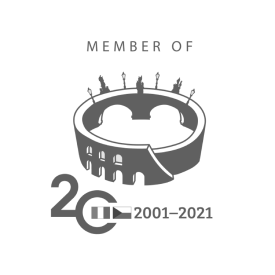
A recent study shows how often smart-working is used in Prague
With the advent of the COVID-19 pandemic, working from home through smart working became normalized. In the following years, it continued to characterize the way of working, not only in the Czech Republic but worldwide.
However in Prague, in 2024, more people returned to working in the office in the presence of others than in 2023, which also led to an increase in the number of passengers on the capital’s metro network.
A new study found that Tuesday is the preferred day for white-collar workers to go to work in the office, while less than half of all employees go to work on Fridays. But the trend remains the same: more people go to the office than in the previous year. The percentage of employees going to work on Tuesdays is 62%, whereas before the pandemic, the average office occupancy rate for all employees was 70% for the whole week. There was, therefore, an inflection from pre-pandemic levels, but compared to last year, more people went to the office (+15%) from Monday to Thursday. In contrast, Friday has seen fewer people in the office than in 2023, constituting an exception to the above trend.
When checking how many people have returned to the office, Prague almost ranks first in Europe. It currently has an average physical office occupancy rate of 57% during the workweek.
The gradual return to offices inevitably affects public transport activity in Prague. Since the end of the pandemic, the return of students to schools and the increase in tourist visits have meant that the number of passengers on the Prague Metro has reached over 90% of its pre-pandemic level.
Prague’s metro system records the busiest peak hour on Thursdays with over 1 million passengers, followed by Tuesdays and Wednesdays, which almost reach the same numbers. This implies that these are the most popular days to travel to the office and this is especially evident when comparing them with the weekend. In particular, Saturday has less than half as many passengers as weekdays, despite the large influx of tourists.
Friday, on the other hand, is the quietest day on public transport, due to a combination of people going on holiday, working from home and a lower number of students going to university for classes in the Capital.
Pubs and restaurants are also busier on the same days, underlining once again that workers most often come to work around the middle of the week. In particular, restaurants recorded more lunchtime visitors this year than in 2023, a direct consequence of more people returning to the office than in the previous year.
In conclusion, recent research highlights a change in the working habits in the capital of the Czech Republic in 2024 compared to the previous year, with an increase in the number of people returning to the office. This increase has also directly impacted public transport, with a noticeable increase in passengers on the metro during working days (especially Tuesday to Thursday). The increased number of workers in the office has also contributed to the filling up of restaurants at lunchtime. However, Friday remains the busiest day, both in offices and on public transport, due to the prevalence of smart working and leisure activities. This study therefore provides a detailed overview of the gradual return to the pre-pandemic routine, highlighting the adaptation of work and social habits in Prague.
Sources: https://www.expats.cz/




